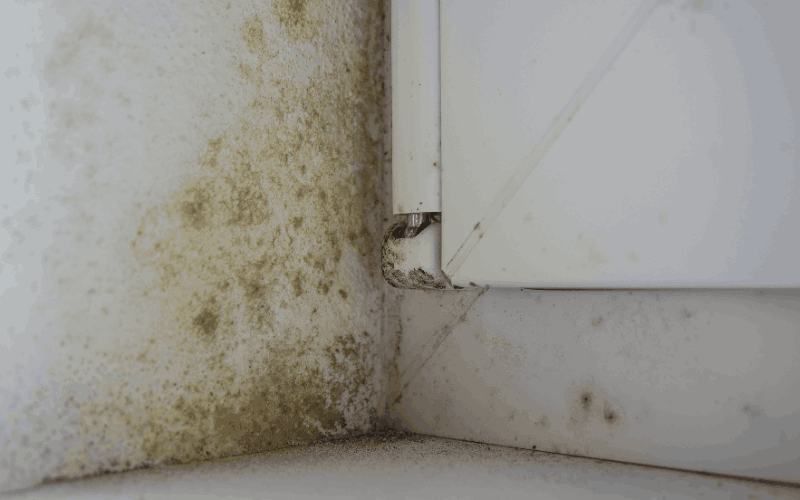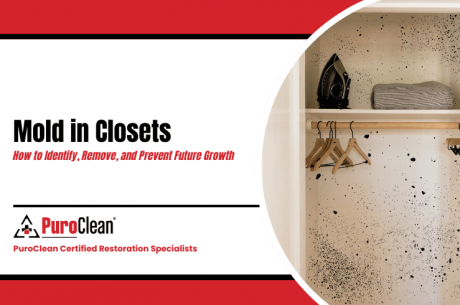
Key Takeaways
- Fungus green is a mold that appears as greenish discoloration on surfaces, thriving in damp, humid conditions.
- Humidity in Zephyrhills homes promotes mold growth through excess moisture, poor ventilation, and leaks.
- Common mold types like Aspergillus, Penicillium, and Cladosporium can cause health issues, especially for those with respiratory problems.
- Prevention involves controlling moisture, fixing leaks, and improving ventilation.
- Professional help is crucial for safe mold removal and preventing further damage.
If you’ve noticed a greenish discoloration on your walls, ceilings, or floors, you might be dealing with a common but troublesome issue in Zephyrhills homes: fungus green. This type of mold or fungus thrives in damp, humid environments, making it a significant concern for homeowners in our area. With Zephyrhills’ warm climate and high humidity levels, homes are especially vulnerable to fungal growth, particularly during the rainy season.
In this blog post, we’ll explore why humidity plays a key role in the development of fungus green, how to spot it in your home, and what you can do to prevent and address it. Early signs or existing growth call for understanding the causes and taking action—like hiring professional mold remediation—to protect your home and health.
What Is Fungus Green?
Fungus green refers to a type of mold or fungal growth that appears as a greenish discoloration on surfaces within your home. This mold thrives in damp and humid environments, often growing on walls, ceilings, wooden furniture, carpets, and even behind wallpaper. While it may seem harmless initially, it can spread quickly, leading to damage to your home and creating potential health risks.
Though various types of mold can appear in greenish hues, some of the most common species found in homes include Aspergillus, Penicillium, and Cladosporium. These fungi release spores that can cause allergies, respiratory problems, and other health situations, particularly for those with asthma or weakened immune systems. The presence of mold often signals an underlying moisture problem, making it crucial to address the issue promptly.
How Humidity Fuels Fungus Green in Zephyrhills Homes
Fungus green is a type of mold that thrives in high-humidity environments. When the air is saturated with moisture, it provides the perfect breeding ground for mold growth. Here are five ways humidity contributes to the development of mold in your home:
1. Excess Moisture in the Air
When humidity levels exceed 70%, it creates an environment where mold spores can settle and grow. The moisture in the air clings to damp surfaces, allowing spores to thrive. If left unchecked, mold can spread, causing damage to your home and decreasing indoor air quality.
2. Poor Ventilation
Insufficient ventilation traps moisture in areas like bathrooms, kitchens, and basements. Without proper airflow, the moisture lingers on surfaces, providing a perfect breeding ground for mold. Hidden spots like behind walls or under floors become prime locations for mold growth. These areas can remain undetected until the mold spreads significantly, leading to structural damage and health issues if not addressed.
3. Leaks and Water Intrusion
Leaks from pipes, roofs, or windows introduce moisture into walls, ceilings, and floors, creating ideal conditions for mold to thrive. Once water accumulates, it remains trapped, fostering mold growth. If leaks are not repaired promptly, the moisture continues to feed the mold, causing it to spread to hidden spaces and potentially compromising the integrity of your home’s structure.
4. Condensation on Surfaces
Warm, humid air meets cooler surfaces, causing condensation to form. This moisture can settle on windowsills, walls, and pipes, allowing mold to grow. If left untreated, the moisture seeps into building materials like wood and drywall, fostering mold growth. Condensation is especially problematic during colder months when temperature fluctuations encourage moisture buildup, often going unnoticed until mold has spread extensively.
5. Humidity Fluctuations
When outdoor humidity levels and indoor temperatures change, condensation forms on surfaces inside the home. This fluctuating moisture creates conditions that encourage mold growth in areas like attics and basements, which are exposed to temperature shifts. Over time, the constant cycle of wet and dry conditions leads to moisture accumulation, allowing mold to develop in hidden spots throughout the home.
What to Do if You Find Fungus Green in Your Home
If you find fungus green in your home, the safest and most effective course of action is to contact a professional mold remediation company. Mold can spread quickly, and attempting to remove it yourself without the proper equipment may cause it to spread or become airborne. A professional will assess the extent of the problem, locate hidden sources of moisture, and safely remove the mold without causing other damage to your home.
Mold removal requires specialized knowledge and tools to ensure it’s completely eradicated. Once the fungus is removed, experts can help implement moisture control measures to prevent future growth, giving you peace of mind and protecting your home.
Frequently Asked Questions

What are the signs that fungus green is present in my home?
Common signs of mold growth include visible greenish discoloration on walls, ceilings, or floors, a musty odor, and damp or wet surfaces. In some cases, mold may grow in hidden areas like behind wallpaper or inside walls. If you notice any of these signs, it’s important to inspect your home for mold and address it quickly.
How can I prevent mold from growing in my home?
Preventing mold begins with controlling moisture levels. Use dehumidifiers to keep humidity levels in check, ensure proper ventilation in damp spots like bathrooms and kitchens, and fix leaks immediately. Regularly monitoring and maintaining dry conditions can prevent mold from taking hold and spreading.
Are there specific areas of my home more likely to have mold?
Yes, areas with high moisture levels are most susceptible to mold growth. Bathrooms, kitchens, basements, and attics are common places where mold thrives. Leaky pipes, poor ventilation, and condensation on windows or walls in these areas make them prime spots for mold. Regular inspections of these spaces can help prevent mold from taking hold.
Can mold damage my home’s structure?
Yes, mold can cause significant damage to the structure of your home over time. If left untreated, mold can weaken materials like wood, drywall, and insulation. This can lead to costly repairs and even structural instability. Addressing mold issues quickly can prevent long-term damage to the integrity of your home.
Final Thoughts
Finding mold in your home, especially fungus green, can be alarming, but it’s important to act quickly to prevent further damage. Humidity and moisture are major contributors to mold growth, so addressing the root cause of the problem is essential. By working with a professional mold remediation company, you can ensure that the mold is safely and thoroughly removed and that the environment in your home is in a safe, healthy condition.
At PuroClean Zephyrhills, we offer expert mold remediation services to handle all of your mold-related concerns. Our trained professionals will help you with fast, effective mold removal and moisture control. Don’t wait until the problem gets worse—contact us today to schedule an inspection and protect your home.



 PuroClean Certified Restoration Specialists
PuroClean Certified Restoration Specialists